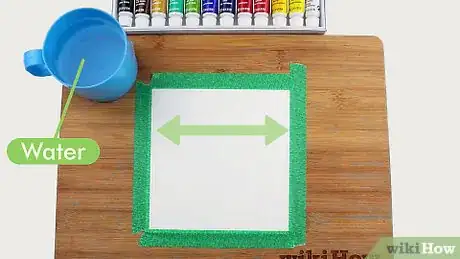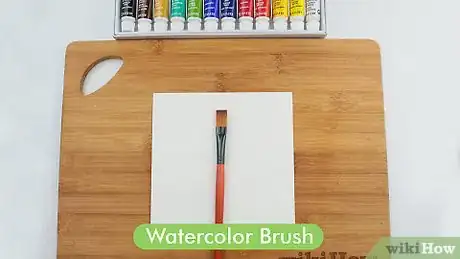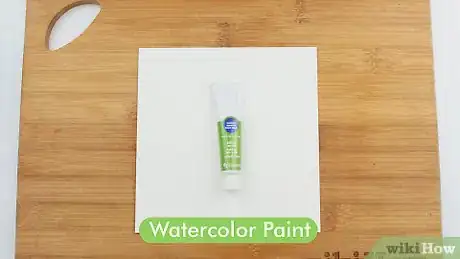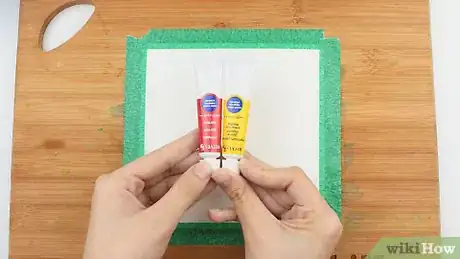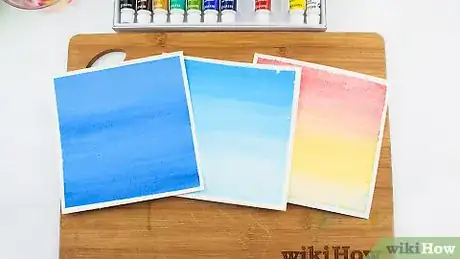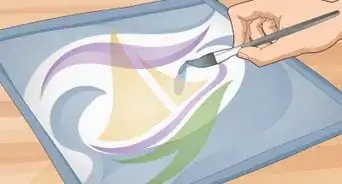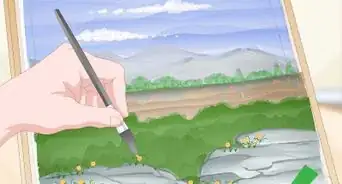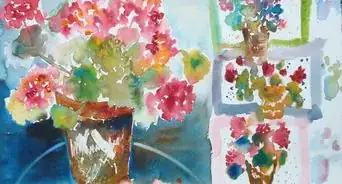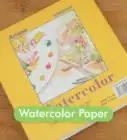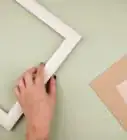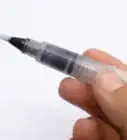This article was co-authored by Kelly Medford. Kelly Medford is an American painter based in Rome, Italy. She studied classical painting, drawing and printmaking both in the U.S. and in Italy. She works primarily en plein air on the streets of Rome, and also travels for private international collectors on commission. She founded Sketching Rome Tours in 2012 where she teaches sketchbook journaling to visitors of Rome. Kelly is a graduate of the Florence Academy of Art.
There are 9 references cited in this article, which can be found at the bottom of the page.
wikiHow marks an article as reader-approved once it receives enough positive feedback. In this case, 100% of readers who voted found the article helpful, earning it our reader-approved status.
This article has been viewed 210,556 times.
Watercolor paintings were discovered in cave paintings of Paleolithic Europe, and have been used to illustrate ancient manuscripts. Painting with watercolors may be easy to do, however, watercolors are not a forgiving medium. You may want to learn watercolor wash techniques, such as flat, graded and blended washes, when painting with watercolors.[1]
Steps
-
1Stretch your watercolor paper. When painting watercolor washes, you need to prepare the paper.[2]
- Soak a sheet of watercolor paper in cold water for 2 minutes.
- Remove the paper from the water and place it on a flat drawing board. Smooth the paper out with a sponge. Watercolor wash techniques won't work if the paper is too wet.
- Tape the paper around all the edges firmly to the board, and let it dry.
EXPERT TIPKelly Medford is an American painter based in Rome, Italy. She studied classical painting, drawing and printmaking both in the U.S. and in Italy. She works primarily en plein air on the streets of Rome, and also travels for private international collectors on commission. She founded Sketching Rome Tours in 2012 where she teaches sketchbook journaling to visitors of Rome. Kelly is a graduate of the Florence Academy of Art.Professional Painter
 Kelly Medford
Kelly Medford
Professional PainterExpert Trick: Wet the paper for softer colors and edges in your painting. Spray some water on your paper or rub it with a moist paper towel. This technique makes all the colors and edges softer. Plus, it's super helpful for correcting while you paint, which you'll probably be doing as a beginner!
-
2Select a large watercolor brush that holds plenty of paint and covers a large area. When painting watercolor washes, you need to cover the entire paper.[3]Advertisement
-
3Choose the background color you want and put a large amount on your palette. To paint with watercolors, you'll need to add enough water to obtain your desired hue.[4]
-
4Draw a large square lightly on the paper with a pencil. This may help you learn control with watercolor wash techniques.
-
5Dampen your paper by dipping your brush in water and lightly sweeping it across the paper.
-
6Dunk your brush in the watercolor paint you prepared. When painting watercolor washes, start at the top of the page with a broad, horizontal stroke to the other side. Practice keeping the brushstrokes even and within the square.[5]
-
7Load your brush with more paint and then move down the paper, 1 brush line at a time. When you paint with watercolors, you may overlap the previous stroke. When you reach the bottom, let the paper dry.[6]
Graded Wash
-
1Dip your brush in the prepared paint. The graded wash is a watercolor wash technique that produces a background with varying monotone hues.
-
2Apply the paint with 1 brush stroke across the top of the square. Continue going down until you fill the entire square.[7]
-
3Add water to each brush stroke to lighten the color, or put in more pigment to darken the hue. To paint with watercolors, you need to learn how to create different contrasts with 1 color.[8]
Blended Wash
-
1Wet the entire paper by dipping your brush in water and lightly stroking it across the page.
-
2Select the colors you desire for a blended wash. With watercolor wash techniques, you could try red and orange to depict a sunset.
-
3Immerse your brush in one color, and then drag it back and forth across the paper. Add a new color without cleaning your brush. This will create a soft transition between the hues when painting watercolor washes.[9]
-
4Spread different amounts of pigment and water to the wet paper to create a pattern or design.[10]
-
5Finished.
Community Q&A
-
QuestionHow do I paint a galaxy with watercolor?
 Community AnswerStart with the lighter colors, then do the darker ones. To add stars, let everything dry, then use a white pen/paint that is not a watercolor.
Community AnswerStart with the lighter colors, then do the darker ones. To add stars, let everything dry, then use a white pen/paint that is not a watercolor. -
QuestionHow can I do this with multicolor?
 Maud BridelCommunity AnswerWhen starting the wash, make sure you have the colors you want. For this, having a larger sheet of painting paper (A3) or canvas is better. Red, orange, yellow, green, blue, indigo and violet are a group of colors you could use. First start by applying the red, add lots of water - but not too much. Then add the orange, making sure the red mixes with the orange, but make sure also that you are not completely combining the two colors. Apply this method of having watery colors and mixing them without completely mixing them together for the rest of the colors.
Maud BridelCommunity AnswerWhen starting the wash, make sure you have the colors you want. For this, having a larger sheet of painting paper (A3) or canvas is better. Red, orange, yellow, green, blue, indigo and violet are a group of colors you could use. First start by applying the red, add lots of water - but not too much. Then add the orange, making sure the red mixes with the orange, but make sure also that you are not completely combining the two colors. Apply this method of having watery colors and mixing them without completely mixing them together for the rest of the colors. -
QuestionIs it necessary to use watercolor paper?
 Community AnswerIt's not necessary, but it's recommended. Watercolor paper is thicker and is less likely to wrinkle.
Community AnswerIt's not necessary, but it's recommended. Watercolor paper is thicker and is less likely to wrinkle.
Things You'll Need
- Watercolor paper
- Water
- Flat drawing board
- Sponge
- Tape
- Watercolor brushes
- Watercolor paints
- Watercolor palette
- Pencil
References
- ↑ https://www.bigcityart.com/watercolors/watercolorpages/sup/history.html
- ↑ https://watercoloraffair.com/complete-guide-to-watercolor-wash-techniques/
- ↑ https://www.youtube.com/watch?v=1jPanPCfYMk
- ↑ https://www.mybluprint.com/article/watercolor-techniques-you-have-to-try
- ↑ https://emptyeasel.com/2014/02/10/how-to-paint-a-perfect-flat-wash-on-wet-or-dry-paper-using-watercolors/
- ↑ https://www.arttutor.com/blog/201512/tips-painting-line-wash
- ↑ https://watercoloraffair.com/complete-guide-to-watercolor-wash-techniques/
- ↑ https://www.youtube.com/watch?v=Q3tQ_lvuHZU
- ↑ https://watercoloraffair.com/complete-guide-to-watercolor-wash-techniques/
